|
|
|
|
 Print Print
|
|
|
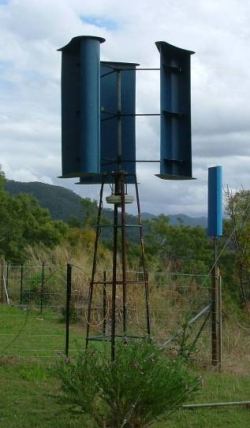
|
| Building a Lenz2 Turbine. |
Page 1 | 2 | 3 |
VAWT ( Vertical Axis Wind Turbine ) wind mills are generally more difficult to make than a HAWT ( Horizontal Axis Wind Turbine ). At first glace they do look simple, there's no tail or yaw bearing to worry about, but after building a few I can say the traditional HAWT windmill is just easier and cheaper. However VAWT's do have some advantages over HAWT's.
The big advantage is they work better in turbulent wind. A HAWT needs to face into the wind, so they use a tail ( or some other control ) to keep them pointed in the right direction. If there is a change in wind direction, they need to turn to face the wind. If there wind is very turbulent, a HAWT spends most of its time turning to face the wind, and becomes useless as a windmill. VAWT's, on the other hand, don't need a tail, they will use wind coming from any direction at any time. This makes them perfect for locations where the wind is turbulent and changing direction constantly.
There are some VAWT designs out there that do use a tail ( eg: Cycloturbine ). The tail is used to control the wings angle . In my opinion, VAWT's with tails are pointless, you might as well use a HAWT because it will be easier to build and maintain. I once build a VAWT with a tail for fun. It worked, but had so many moving parts it was always falling apart. |
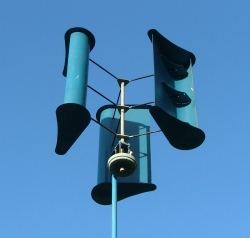 |
One of the best VAWT designs you can build is a Lenz2. It's uses a combination of drag and lift to generate power, so it has excellent startup torque and efficiency.
The Lenz2 design belongs to Ed Lenz of windstuffnow.com. Ed built the Lenz2 based on his own research into VAWT windmills, you can read about his experiments here.
The Lenz2 design can been seen in more detail on this page here, where Ed describes the building of a 3 by 4 foot turbine.
|
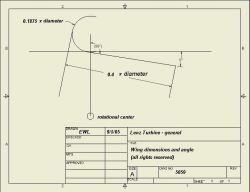 |
|
Below is my first attempt at a Lenz2. The wings were made from some 90mm PVC pipe slit in half, 3mm ply wood, and some 9mm ply formers. The turbine was mounted onto a 4:1 gearbox from a 4inch angle grinder, and this drove a small AC servo motor. It did work, but needed a lot of wind to get started due to the losses and friction in the gearbox.
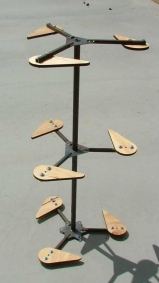 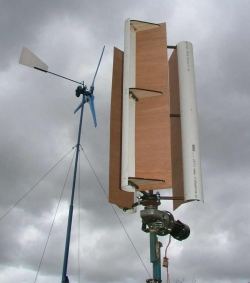
|
I decided to go bigger. I had some 250mm PVC pipe, so basing the design around that size, I constructed three wings to suit a 1.3m diameter by 1.2m high turbine. The formers were lasercut from 2mm zinc plate, and had elongated spar mounting holes, so I could play around with the wings angle.
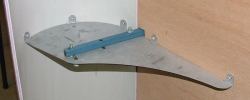
Below is the finished wings, with winglets to improve efficiency, |
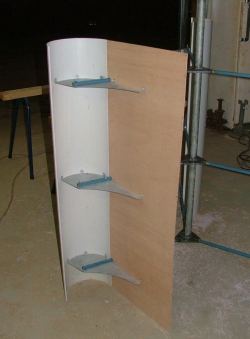 |
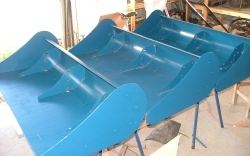 |
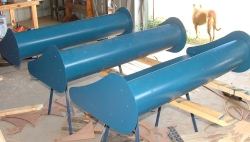 |
I built a simple 4 legged stand to test the turbine. The alternator of choice for me is a Fisher and Paykel Smartdrive, here you can see the stator mounted.
To the left is the finished Lenz2.
It performed OK, startup on a standard Smartdrive, which are well know for their resistance to easy startup, was no problem. The only problem I did have was a loud droning noise. See the Smartdrive vibrates as it rotates, and the large wings of the Lenz2 turbine act as loudspeakers, radiating the vibration as noise. It sounded like a motorbike out in the back yard! I swapped the stator for a decogged stator and the noise virtually went away, fixed.
|
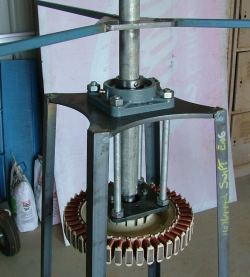 |
Next Page. 
|
|
|
|
|
© TheBackShed 2011
|










